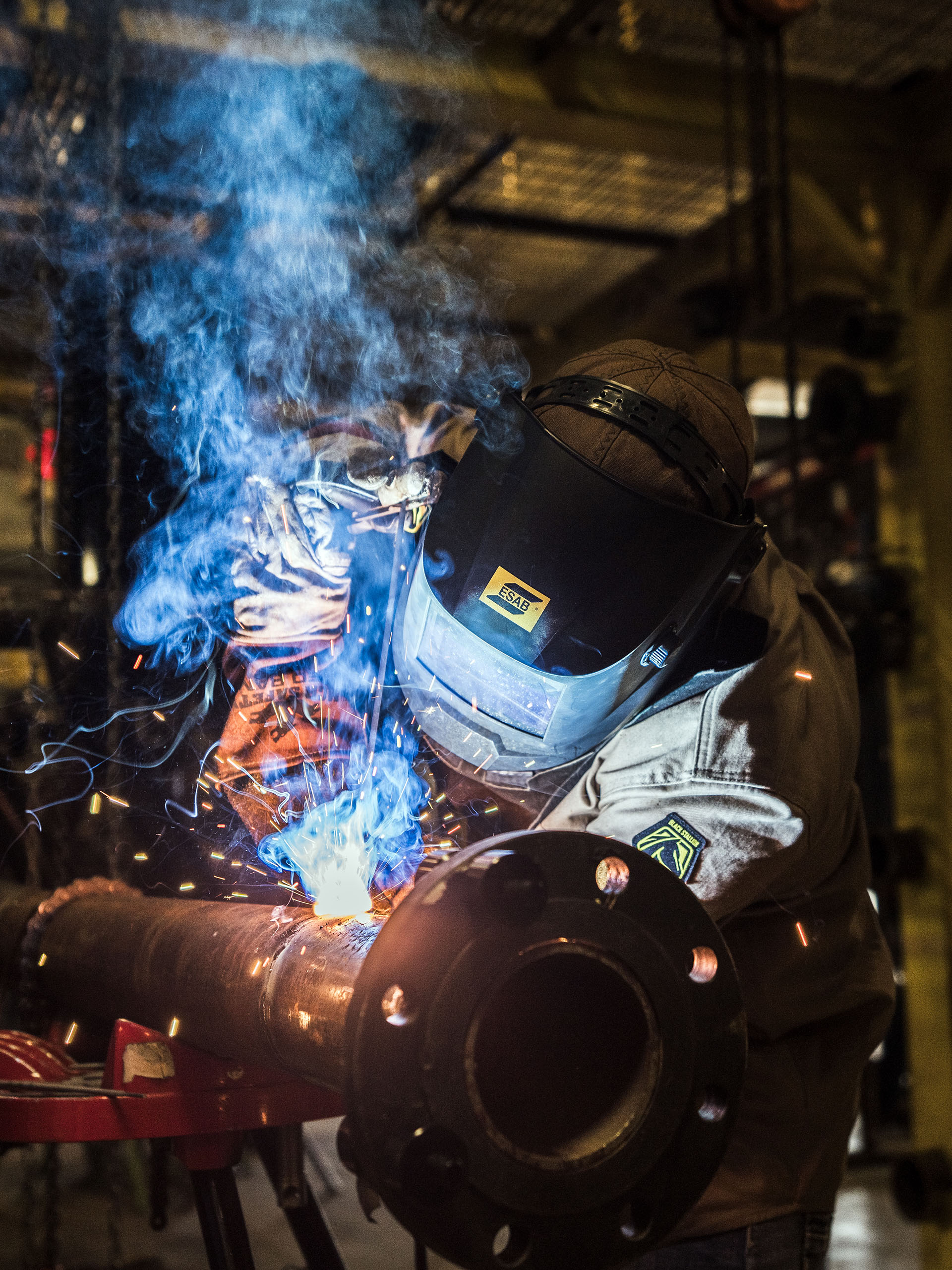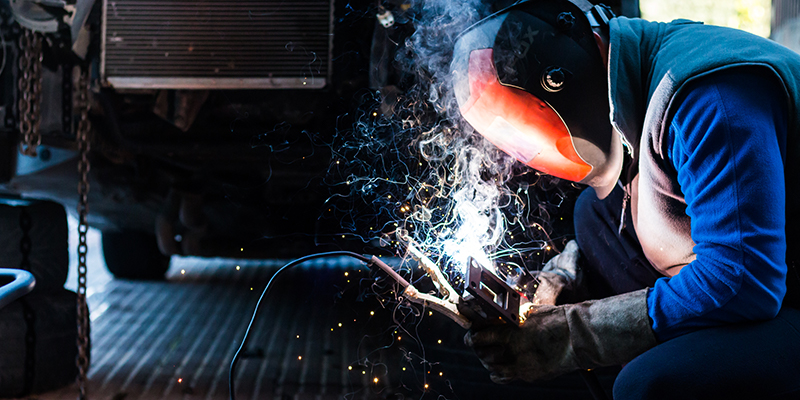Common Welding Repair Service Issues and How to Address Them Effectively
Welding repairs often come across a series of issues that can jeopardize the honesty of the final item. Common problems include poor infiltration, porosity, and misalignment, amongst others. Each problem offers unique obstacles that need details techniques for resolution. Comprehending these concerns is important for welders intending to boost their skills and results. This conversation will explore these common welding fixing problems and reliable approaches to resolve them.
Inadequate Infiltration
Poor penetration happens when the weld steel fails to fully fuse with the base product, resulting in weak joints and prospective structural failings. This concern often comes from not enough warm input, incorrect electrode angle, or inappropriate welding speed. Welders may come across insufficient infiltration as a result of a miscalculation of the essential parameters for a certain material density or kind. Additionally, contamination on the base product's surface area can hinder efficient bonding, exacerbating the problem. To attend to inadequate infiltration, welders need to guarantee proper settings on their tools and preserve a tidy job surface. Regular evaluation of welds is suggested to identify any kind of shortages early, permitting timely modifications and the prevention of compromised architectural honesty in welded assemblies.
Porosity
Porosity is a common issue in bonded joints that shows up as tiny gas bubbles entraped within the weld steel. This flaw can endanger the honesty of the weld, resulting in minimized strength and prospective failure under anxiety. Belgrade. Porosity commonly arises from contamination, moisture, or improper welding methods, which allow gases to get away into the molten weld swimming pool. To resolve porosity, welders should assure appropriate surface area preparation, maintain a clean workplace, and make use of appropriate welding criteria. Furthermore, picking the best filler material and securing gas can mitigate gas entrapment. Normal assessment and screening of welds can assist determine porosity early, assuring timely restorative actions are taken, thus preserving the high quality and dependability of the welded framework
Imbalance
Misalignment in welding can develop from numerous elements, consisting of incorrect setup and thermal growth. Understanding the origin is important for reliable resolution. Several adjustment methods are readily available to realign elements and guarantee architectural integrity.
Sources of Misalignment
Welding misalignment commonly originates from a variety of underlying concerns that can endanger structural integrity. One main reason is improper fit-up of elements prior to welding, which can cause gaps and irregular surface areas. Variants in thermal expansion throughout the welding process can likewise lead to distortion, particularly if the products being joined have different coefficients of growth. Furthermore, insufficient fixturing and securing might stop working to hold components firmly in position, resulting in motion during welding. Inadequately maintained equipment, consisting of welding makers and tools, may present variances in the weld grain, more adding to misalignment. Operator mistake, stemming from not enough training or experience, can likewise play a substantial duty in developing misaligned welds.

Modification Methods Offered
Dealing with imbalance properly calls for a combination of rehabilitative methods customized to the specific problems handy. One common approach is making use of components or jigs to hold parts in the right setting throughout welding, guaranteeing regular placement. Furthermore, preheating the products can help in reducing distortion and improve fit-up. For considerable misalignment, mechanical adjustment strategies, such as making use of hydraulic jacks or clamps, can be employed to fix the setting before welding. Post-weld heat treatment may likewise be essential to ease stresses triggered by misalignment. Ultimately, cautious evaluation and modification during the arrangement stage can stop misalignment concerns from ending up being considerable troubles, promoting a smoother welding procedure and boosting overall structural integrity.
Distortion
Distortion is a common obstacle in welding that can develop from numerous factors, consisting of unequal cooling and heating. Recognizing the reasons for distortion is crucial for carrying out efficient prevention techniques. Addressing this problem not only enhances structural integrity yet additionally improves the total high quality of the weld.
Sources of Distortion
When based on the extreme warm of welding, products often undergo changes that can result in distortion. This sensation largely emerges from thermal growth and contraction during the welding process. As the weld location warms up, the material broadens; upon cooling, it gets, which can create inner stresses. On top of that, unequal home heating across a work surface can intensify these stresses, causing bending or bending. The sort of product likewise plays a considerable duty; metals with differing thermal conductivity and coefficients of growth might react in a different way, resulting in uncertain distortions. Additionally, bad joint layout and poor fixturing can add to misalignment throughout welding, increasing the probability of distortion. Comprehending these reasons is important for efficient get more info welding fixing and avoidance approaches.
Avoidance Techniques
Effective prevention techniques for distortion during welding focus on controlling warm input and making sure appropriate joint design. Preserving a constant warm input aids to reduce thermal development and contraction, which can result in distortion. Making use of strategies such as preheating the work surface can additionally decrease the temperature slope, promoting uniform home heating. Additionally, choosing ideal joint layouts, such as T-joints or lap joints, can boost security and lower anxiety concentrations. Applying appropriate fixturing to safeguard the work surfaces in area further aids in maintaining placement during the welding procedure. Finally, staggered welding sequences can distribute heat more uniformly, avoiding local distortion. By applying these methods, welders can substantially lower the chance of distortion and improve the overall top quality of their welds.
Breaking
Splitting is a typical problem experienced in welding repair work, frequently arising from different variables such as inappropriate cooling prices, product selection, or insufficient joint preparation. The event of splits can greatly compromise the stability of the weld, causing potential failures throughout operation. To resolve this problem, welders must first analyze the origin creates, ensuring that materials work and properly picked for the details application. Additionally, regulating the cooling rate throughout the welding process is necessary; quick cooling can generate stress and anxiety and bring about breaking. Correct joint layout and prep work likewise add to decreasing the danger. Implementing these strategies can enhance weld quality and longevity, inevitably lowering the probability of splitting in finished weldments.

Insufficient Fusion
A substantial concern in welding fixings is incomplete blend, which takes place when the weld metal does not effectively bond with the base material or previous weld passes - Montana Mobile Welding and Repair Welding. This flaw can cause weaknesses in the joint, possibly jeopardizing the stability of the welded framework. Variables contributing to insufficient fusion include not enough warmth input, incorrect welding technique, and contamination of the surface areas being signed up with. To resolve this concern efficiently, welders must ensure correct pre-weld cleaning and surface prep work, along with readjust their welding criteria to attain sufficient penetration and fusion. Routine evaluation throughout the welding procedure can also aid recognize insufficient fusion early, allowing for timely rehabilitative steps to boost the total top quality of the weld
Overheating
While welding repairs can enhance architectural integrity, overheating provides a significant obstacle that can lead to product degradation. Excessive heat throughout welding can modify the mechanical residential properties of steels, resulting in reduced toughness, raised brittleness, and warping. This sensation is particularly crucial in high-stress applications where structural reliability is critical. Identifying getting too hot can include visual inspections for staining or distortion, along with monitoring temperature level throughout the welding process. To mitigate the threats connected with overheating, welders must use appropriate methods, such as managing warmth input, changing traveling speed, and utilizing suitable filler products. In addition, applying pre- and post-weld warm treatments can aid recover material residential or commercial properties and improve the total quality of the fixing, making sure long-lasting performance and safety.
Regularly Asked Inquiries
What Are the Usual Indicators of a Welding Problem?

Exactly How Can I Check My Welds for Top quality?
To evaluate welds for top quality, one can make use of aesthetic evaluations, ultrasonic screening, and radiographic methods. Each technique ensures architectural integrity, determines problems, and confirms adherence to defined standards, eventually enhancing the reliability of the welded joints.
What Safety and security Safety Measures Should I Take While Welding?
When welding, one need to focus on safety and security by wearing ideal individual safety equipment, making certain appropriate air flow, securing flammable materials away, maintaining a tidy office, and being mindful of environments to protect against injuries and mishaps.
Can I Fix a Weld Without Redesigning the Entire Joint?
Repairing a weld without redesigning the whole joint is feasible, depending upon the damage (Montana Mobile Welding and Repair Belgrade Fabrication). Techniques such as grinding, adding filler product, or using a welding process can efficiently attend to certain imperfections while protecting the bordering structure
What Tools Are Crucial for Reliable Welding Repair Works?
Necessary devices for effective welding fixings include a welding maker, cable brush, grinder, safety equipment, clamps, and filler products. Each device plays a crucial function in guaranteeing top quality and safety throughout the repair service procedure. Porosity usually arises from contamination, moisture, or inappropriate welding methods, which permit gases to run away into the liquified weld swimming pool. Poorly conserved tools, consisting of welding makers and tools, might present incongruities in the weld grain, more contributing to misalignment. When subjected to the intense warmth of welding, products commonly undergo changes that can lead to distortion. Cracking is a common concern experienced in welding repair work, commonly resulting from different elements such as improper air conditioning rates, product option, or inadequate joint preparation. A substantial concern in welding repair services is insufficient blend, which occurs when the weld steel does not effectively bond with the base material or previous weld passes.